"Image": models, code, and papers
Rethinking Fully Convolutional Networks for the Analysis of Photoluminescence Wafer Images
Mar 01, 2020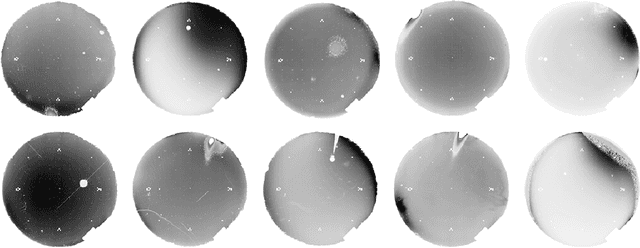
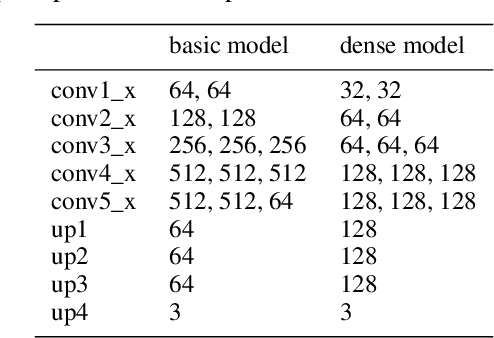
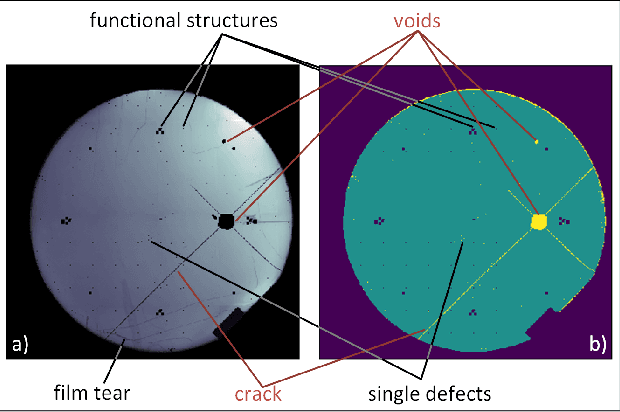
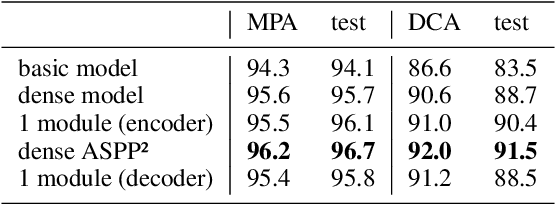
The manufacturing of light-emitting diodes is a complex semiconductor-manufacturing process, interspersed with different measurements. Among the employed measurements, photoluminescence imaging has several advantages, namely being a non-destructive, fast and thus cost-effective measurement. On a photoluminescence measurement image of an LED wafer, every pixel corresponds to an LED chip's brightness after photo-excitation, revealing chip performance information. However, generating a chip-fine defect map of the LED wafer, based on photoluminescence images, proves challenging for multiple reasons: on the one hand, the measured brightness values vary from image to image, in addition to local spots of differing brightness. On the other hand, certain defect structures may assume multiple shapes, sizes and brightness gradients, where salient brightness values may correspond to defective LED chips, measurement artefacts or non-defective structures. In this work, we revisit the creation of chip-fine defect maps using fully convolutional networks and show that the problem of segmenting objects at multiple scales can be improved by the incorporation of densely connected convolutional blocks and atrous spatial pyramid pooling modules. We also share implementation details and our experiences with training networks with small datasets of measurement images. The proposed architecture significantly improves the segmentation accuracy of highly variable defect structures over our previous version.
Guiding Long-Short Term Memory for Image Caption Generation
Sep 16, 2015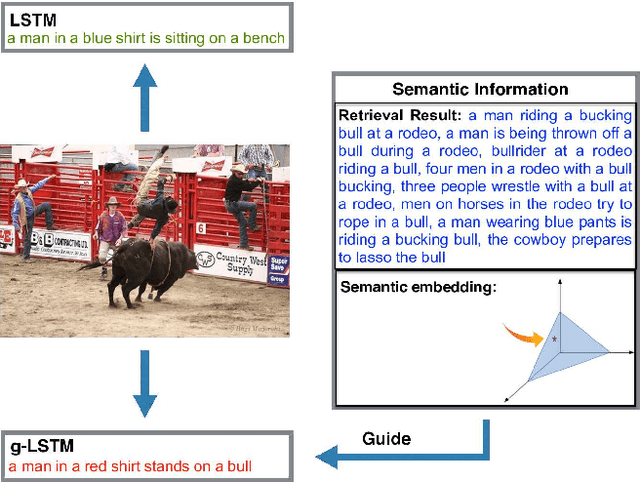
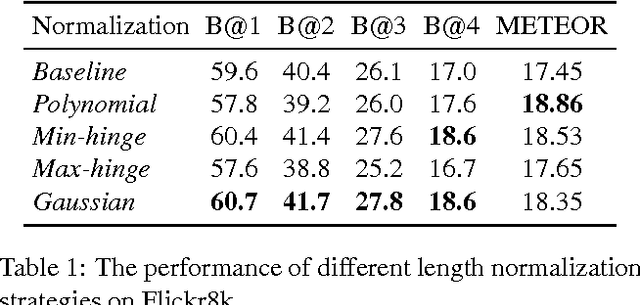
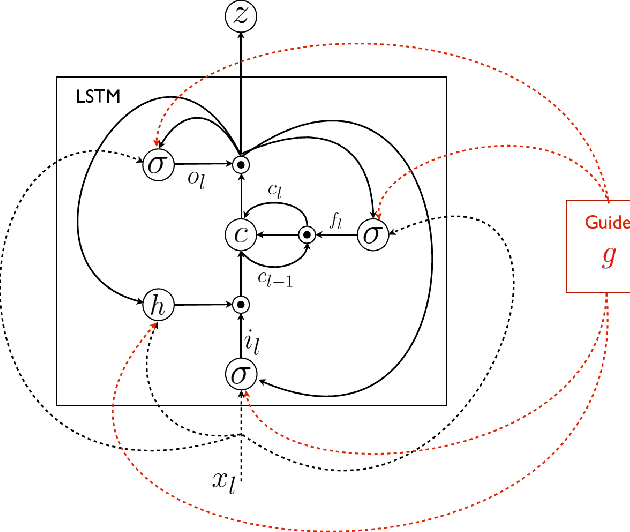
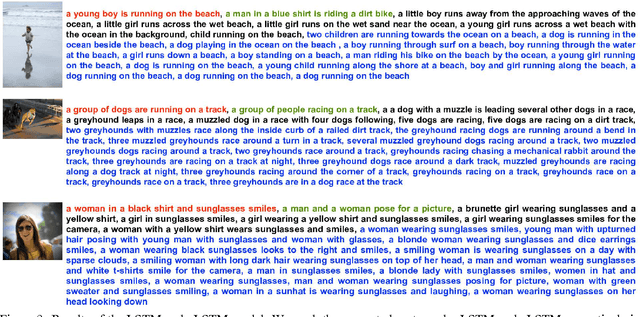
In this work we focus on the problem of image caption generation. We propose an extension of the long short term memory (LSTM) model, which we coin gLSTM for short. In particular, we add semantic information extracted from the image as extra input to each unit of the LSTM block, with the aim of guiding the model towards solutions that are more tightly coupled to the image content. Additionally, we explore different length normalization strategies for beam search in order to prevent from favoring short sentences. On various benchmark datasets such as Flickr8K, Flickr30K and MS COCO, we obtain results that are on par with or even outperform the current state-of-the-art.
Unconstrained Facial Expression Transfer using Style-based Generator
Dec 12, 2019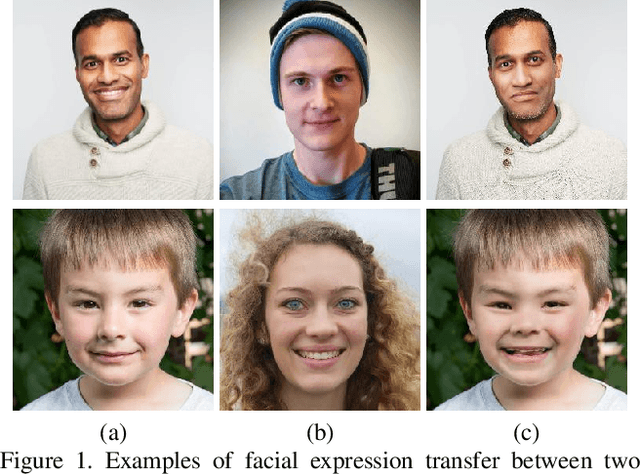


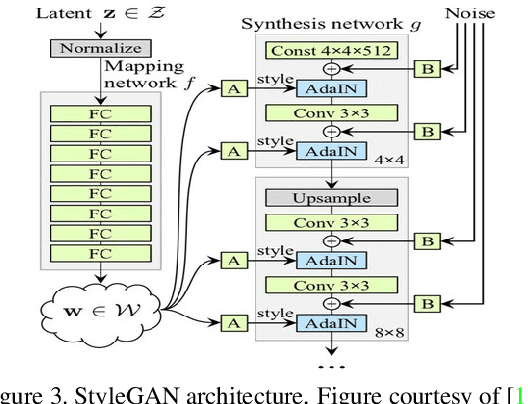
Facial expression transfer and reenactment has been an important research problem given its applications in face editing, image manipulation, and fabricated videos generation. We present a novel method for image-based facial expression transfer, leveraging the recent style-based GAN shown to be very effective for creating realistic looking images. Given two face images, our method can create plausible results that combine the appearance of one image and the expression of the other. To achieve this, we first propose an optimization procedure based on StyleGAN to infer hierarchical style vector from an image that disentangle different attributes of the face. We further introduce a linear combination scheme that fuses the style vectors of the two given images and generate a new face that combines the expression and appearance of the inputs. Our method can create high-quality synthesis with accurate facial reenactment. Unlike many existing methods, we do not rely on geometry annotations, and can be applied to unconstrained facial images of any identities without the need for retraining, making it feasible to generate large-scale expression-transferred results.
Generate High-Resolution Adversarial Samples by Identifying Effective Features
Jan 21, 2020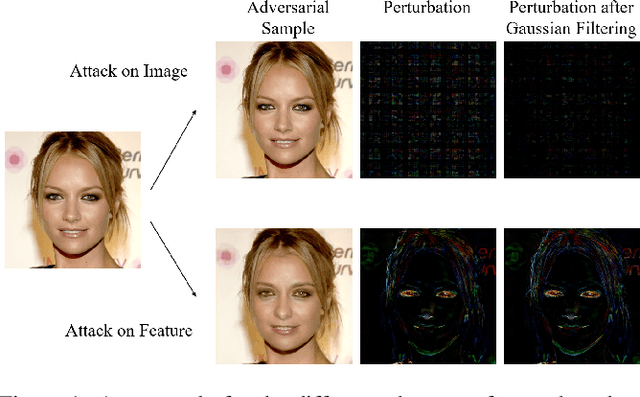
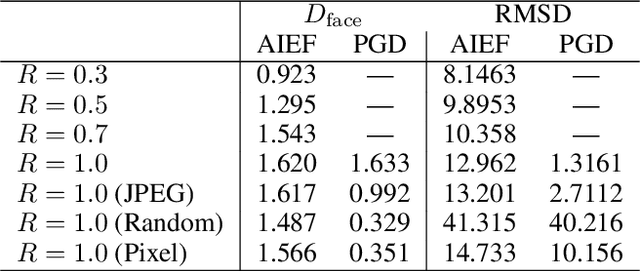
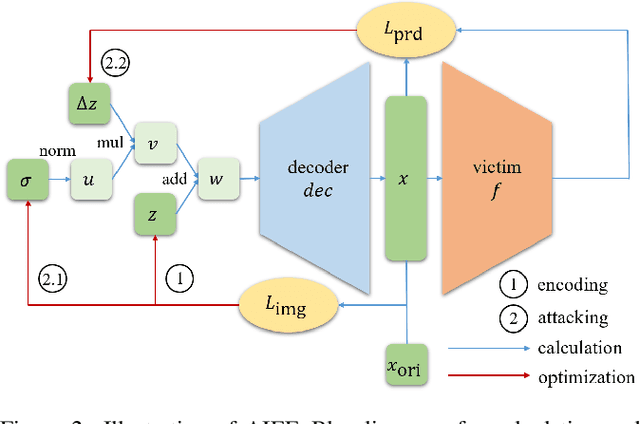
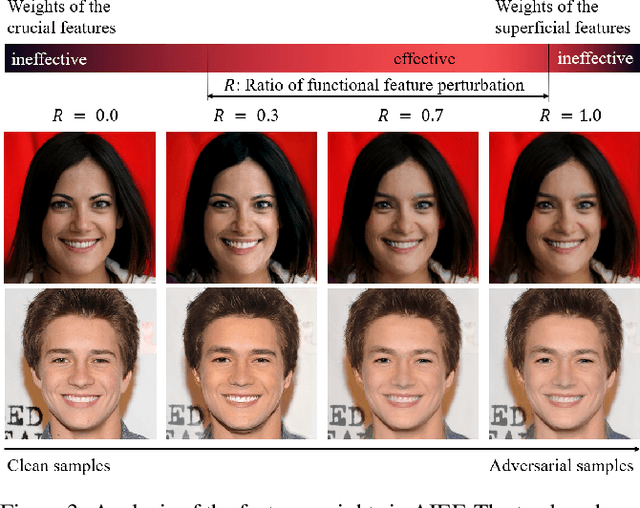
As the prevalence of deep learning in computer vision, adversarial samples that weaken the neural networks emerge in large numbers, revealing their deep-rooted defects. Most adversarial attacks calculate an imperceptible perturbation in image space to fool the DNNs. In this strategy, the perturbation looks like noise and thus could be mitigated. Attacks in feature space produce semantic perturbation, but they could only deal with low resolution samples. The reason lies in the great number of coupled features to express a high-resolution image. In this paper, we propose Attack by Identifying Effective Features (AIEF), which learns different weights for features to attack. Effective features, those with great weights, influence the victim model much but distort the image little, and thus are more effective for attack. By attacking mostly on them, AIEF produces high resolution adversarial samples with acceptable distortions. We demonstrate the effectiveness of AIEF by attacking on different tasks with different generative models.
Fashion-MNIST: a Novel Image Dataset for Benchmarking Machine Learning Algorithms
Sep 15, 2017

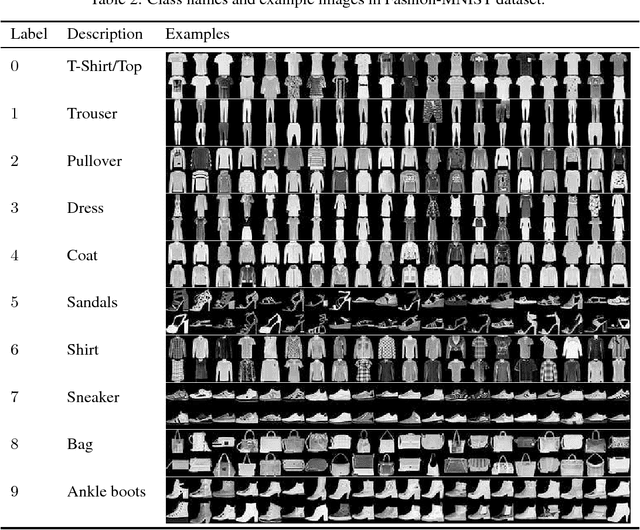

We present Fashion-MNIST, a new dataset comprising of 28x28 grayscale images of 70,000 fashion products from 10 categories, with 7,000 images per category. The training set has 60,000 images and the test set has 10,000 images. Fashion-MNIST is intended to serve as a direct drop-in replacement for the original MNIST dataset for benchmarking machine learning algorithms, as it shares the same image size, data format and the structure of training and testing splits. The dataset is freely available at https://github.com/zalandoresearch/fashion-mnist
Improving One-stage Visual Grounding by Recursive Sub-query Construction
Aug 03, 2020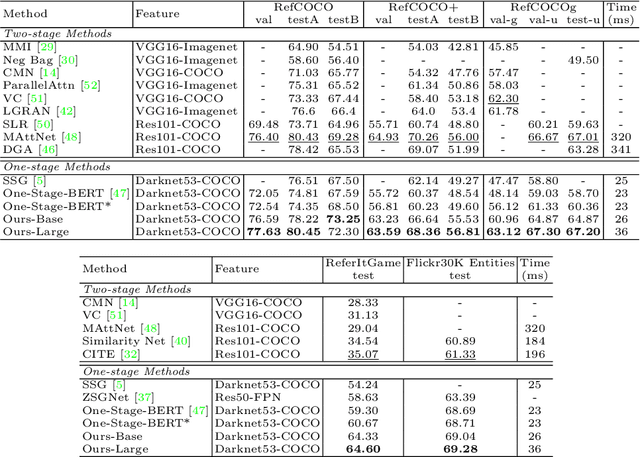

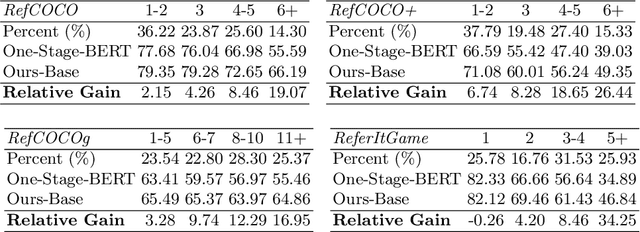
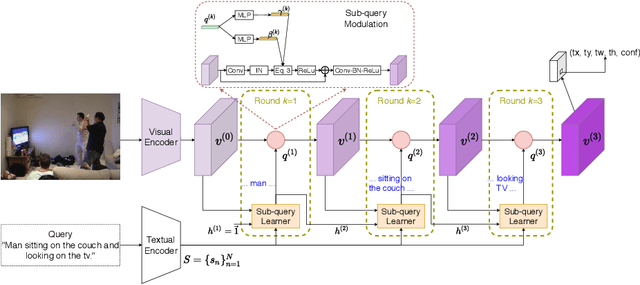
We improve one-stage visual grounding by addressing current limitations on grounding long and complex queries. Existing one-stage methods encode the entire language query as a single sentence embedding vector, e.g., taking the embedding from BERT or the hidden state from LSTM. This single vector representation is prone to overlooking the detailed descriptions in the query. To address this query modeling deficiency, we propose a recursive sub-query construction framework, which reasons between image and query for multiple rounds and reduces the referring ambiguity step by step. We show our new one-stage method obtains 5.0%, 4.5%, 7.5%, 12.8% absolute improvements over the state-of-the-art one-stage baseline on ReferItGame, RefCOCO, RefCOCO+, and RefCOCOg, respectively. In particular, superior performances on longer and more complex queries validates the effectiveness of our query modeling.
Deep learning mediated single time-point image-based prediction of embryo developmental outcome at the cleavage stage
May 21, 2020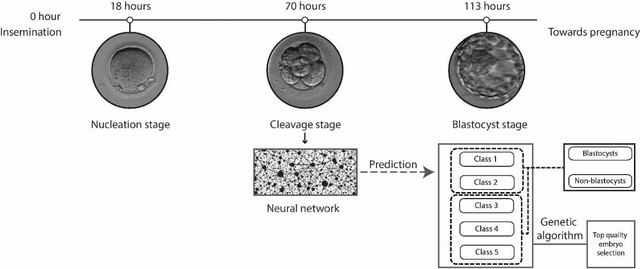
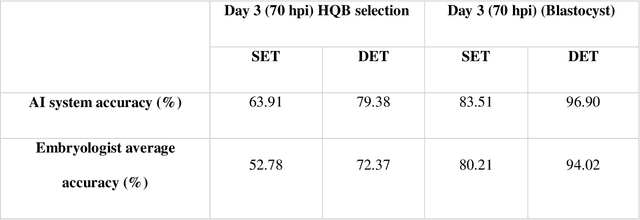
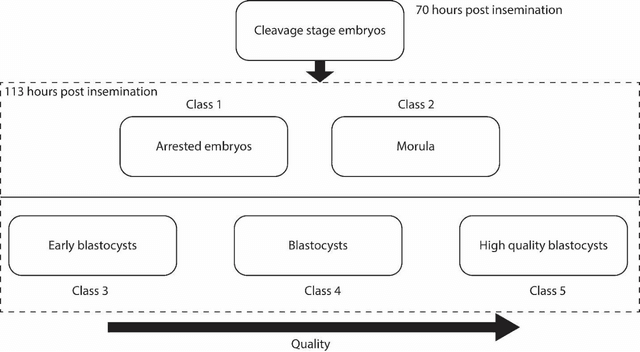
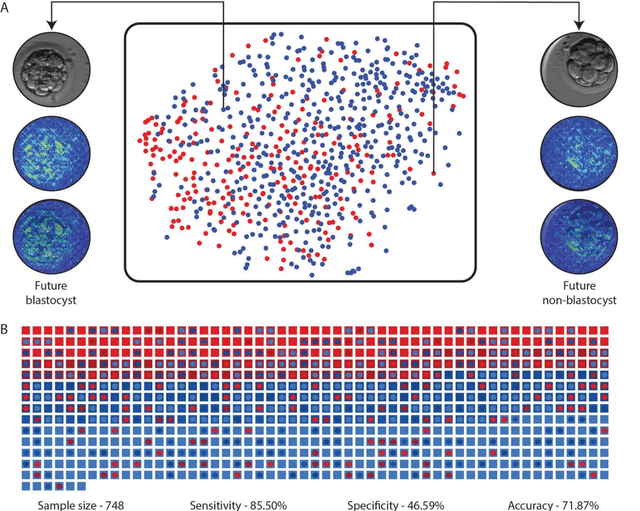
In conventional clinical in-vitro fertilization practices embryos are transferred either at the cleavage or blastocyst stages of development. Cleavage stage transfers, particularly, are beneficial for patients with relatively poor prognosis and at fertility centers in resource-limited settings where there is a higher chance of developmental failure in embryos in-vitro. However, one of the major limitations of embryo selections at the cleavage stage is the availability of very low number of manually discernable features to predict developmental outcomes. Although, time-lapse imaging systems have been proposed as possible solutions, they are cost-prohibitive and require bulky and expensive hardware, and labor-intensive. Advances in convolutional neural networks (CNNs) have been utilized to provide accurate classifications across many medical and non-medical object categories. Here, we report an automated system for classification and selection of human embryos at the cleavage stage using a trained CNN combined with a genetic algorithm. The system selected the cleavage stage embryo at 70 hours post insemination (hpi) that ultimately developed into top-quality blastocyst at 70 hpi with 64% accuracy, outperforming the abilities of embryologists in identifying embryos with the highest developmental potential. Such systems can have a significant impact on IVF procedures by empowering embryologists for accurate and consistent embryo assessment in both resource-poor and resource-rich settings.
A robust solution of a statistical inverse problem in multiscale computational mechanics using an artificial neural network
Nov 16, 2020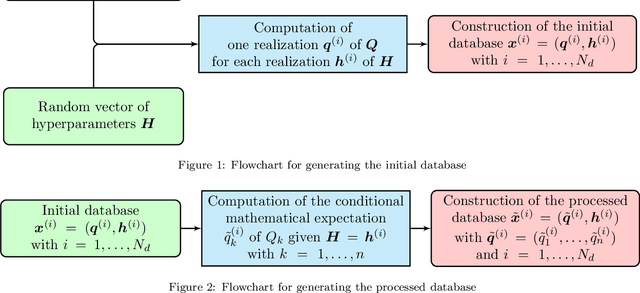
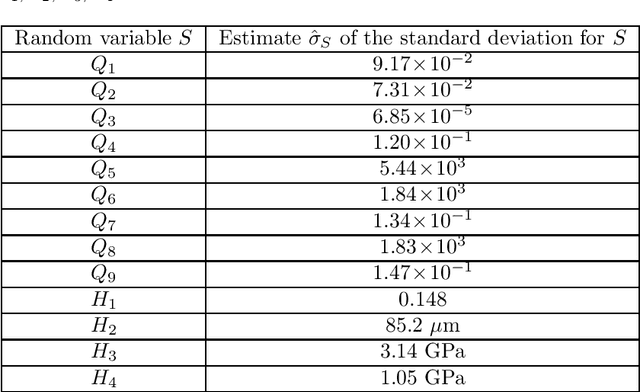


This work addresses the inverse identification of apparent elastic properties of random heterogeneous materials using machine learning based on artificial neural networks. The proposed neural network-based identification method requires the construction of a database from which an artificial neural network can be trained to learn the nonlinear relationship between the hyperparameters of a prior stochastic model of the random compliance field and some relevant quantities of interest of an ad hoc multiscale computational model. An initial database made up with input and target data is first generated from the computational model, from which a processed database is deduced by conditioning the input data with respect to the target data using the nonparametric statistics. Two-and three-layer feedforward artificial neural networks are then trained from each of the initial and processed databases to construct an algebraic representation of the nonlinear mapping between the hyperparameters (network outputs) and the quantities of interest (network inputs). The performances of the trained artificial neural networks are analyzed in terms of mean squared error, linear regression fit and probability distribution between network outputs and targets for both databases. An ad hoc probabilistic model of the input random vector is finally proposed in order to take into account uncertainties on the network input and to perform a robustness analysis of the network output with respect to the input uncertainties level. The capability of the proposed neural network-based identification method to efficiently solve the underlying statistical inverse problem is illustrated through two numerical examples developed within the framework of 2D plane stress linear elasticity, namely a first validation example on synthetic data obtained through computational simulations and a second application example on real experimental data obtained through a physical experiment monitored by digital image correlation on a real heterogeneous biological material (beef cortical bone).
Correlation-wise Smoothing: Lightweight Knowledge Extraction for HPC Monitoring Data
Oct 13, 2020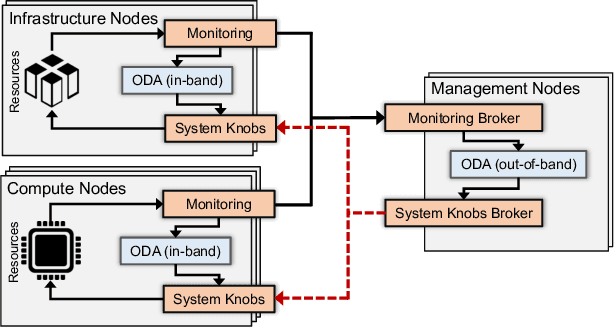

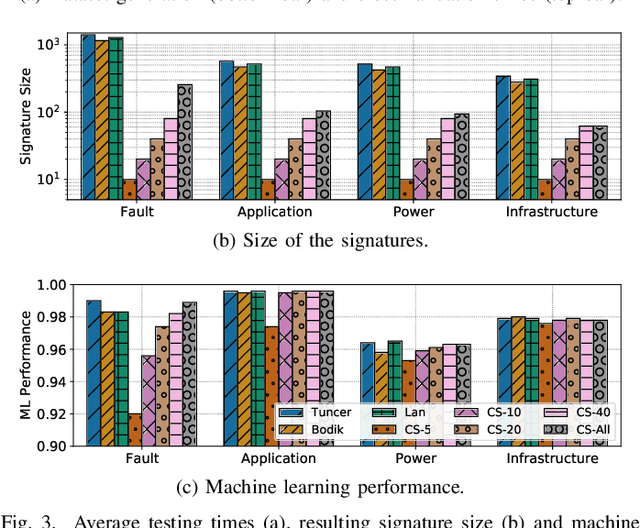
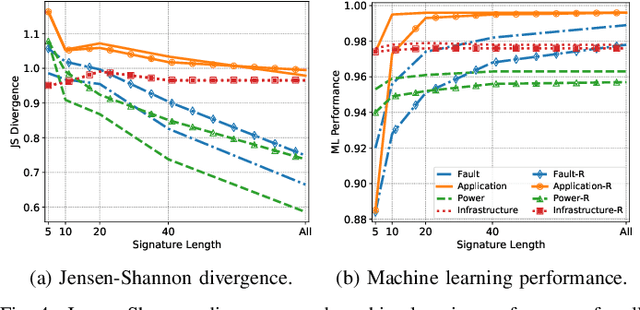
Modern High-Performance Computing (HPC) and data center operators rely more and more on data analytics techniques to improve the efficiency and reliability of their operations. They employ models that ingest time-series monitoring sensor data and transform it into actionable knowledge for system tuning: a process known as Operational Data Analytics (ODA). However, monitoring data has a high dimensionality, is hardware-dependent and difficult to interpret. This, coupled with the strict requirements of ODA, makes most traditional data mining methods impractical and in turn renders this type of data cumbersome to process. Most current ODA solutions use ad-hoc processing methods that are not generic, are sensible to the sensors' features and are not fit for visualization. In this paper we propose a novel method, called Correlation-wise Smoothing (CS), to extract descriptive signatures from time-series monitoring data in a generic and lightweight way. Our CS method exploits correlations between data dimensions to form groups and produces image-like signatures that can be easily manipulated, visualized and compared. We evaluate the CS method on HPC-ODA, a collection of datasets that we release with this work, and show that it leads to the same performance as most state-of-the-art methods while producing signatures that are up to ten times smaller and up to ten times faster, while gaining visualizability, portability across systems and clear scaling properties.
How Useful Are the Machine-Generated Interpretations to General Users? A Human Evaluation on Guessing the Incorrectly Predicted Labels
Aug 26, 2020

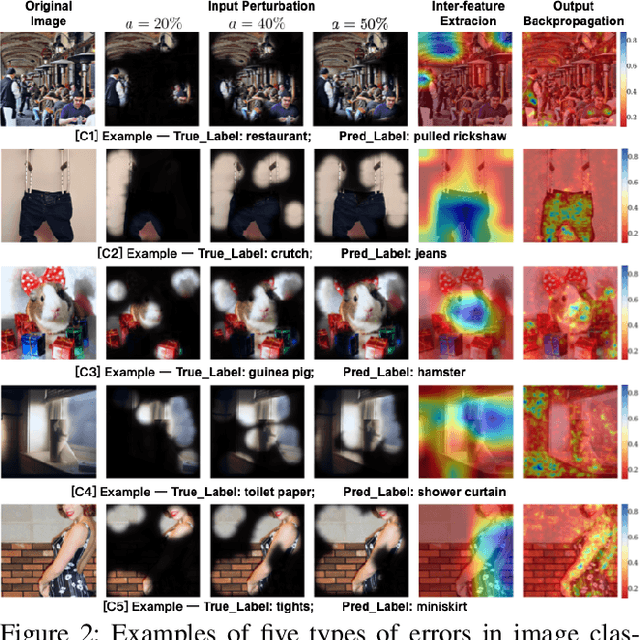

Explaining to users why automated systems make certain mistakes is important and challenging. Researchers have proposed ways to automatically produce interpretations for deep neural network models. However, it is unclear how useful these interpretations are in helping users figure out why they are getting an error. If an interpretation effectively explains to users how the underlying deep neural network model works, people who were presented with the interpretation should be better at predicting the model's outputs than those who were not. This paper presents an investigation on whether or not showing machine-generated visual interpretations helps users understand the incorrectly predicted labels produced by image classifiers. We showed the images and the correct labelsto 150 online crowd workers and asked them to select the incorrectly predicted labels with or without showing them the machine-generated visual interpretations. The results demonstrated that displaying the visual interpretations did not increase, but rather decreased, the average guessing accuracy by roughly 10%.
 Add to Chrome
Add to Chrome Add to Firefox
Add to Firefox Add to Edge
Add to Edge